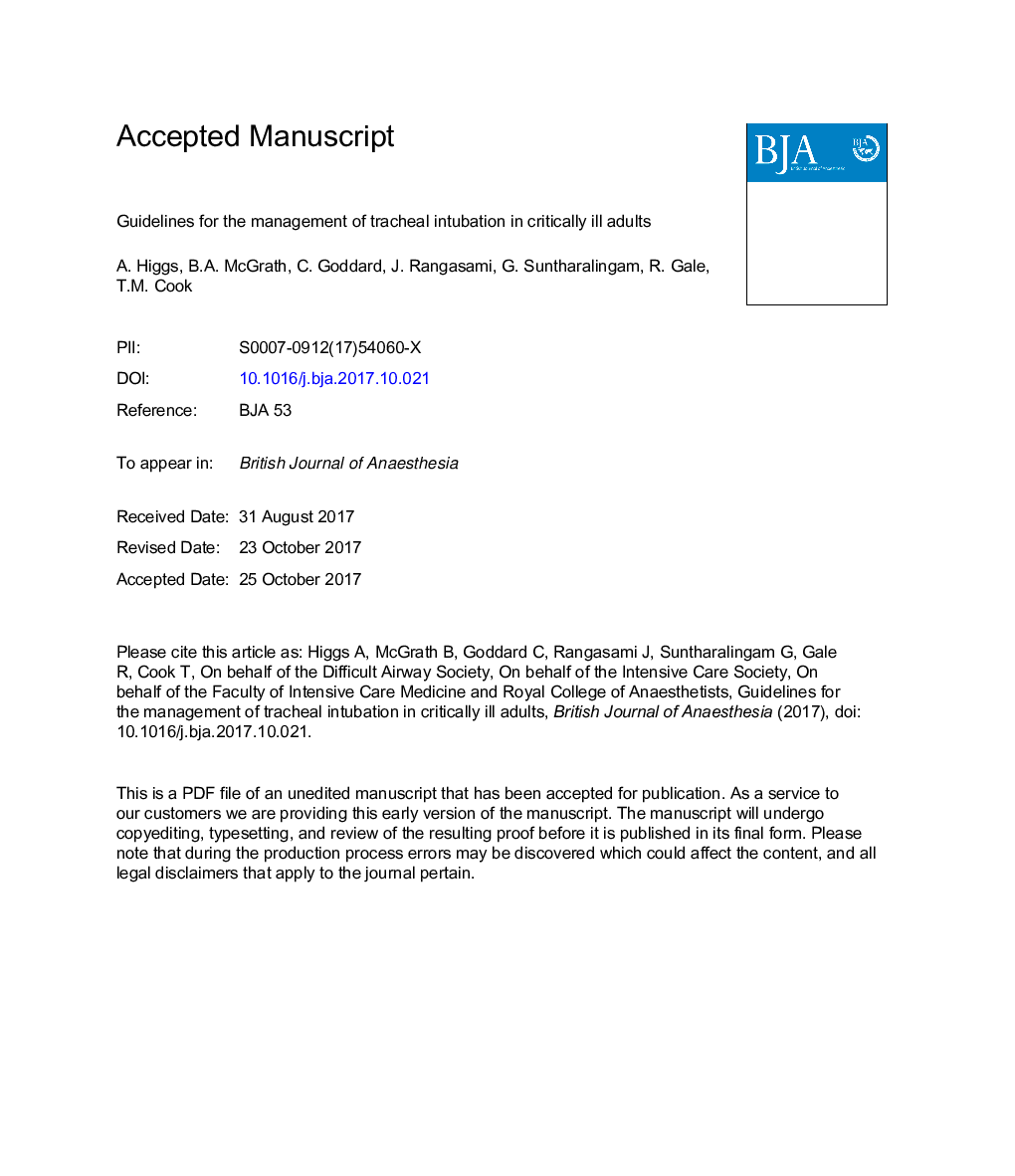| Article ID | Journal | Published Year | Pages | File Type |
|---|---|---|---|---|
| 8929892 | British Journal of Anaesthesia | 2018 | 73 Pages |
Abstract
These guidelines describe a comprehensive strategy to optimize oxygenation, airway management, and tracheal intubation in critically ill patients, in all hospital locations. They are a direct response to the 4th National Audit Project of the Royal College of Anaesthetists and Difficult Airway Society, which highlighted deficient management of these extremely vulnerable patients leading to major complications and avoidable deaths. They are founded on robust evidence where available, supplemented by expert consensus opinion where it is not. These guidelines recognize that improved outcomes of emergency airway management require closer attention to human factors, rather than simply introduction of new devices or improved technical proficiency. They stress the role of the airway team, a shared mental model, planning, and communication throughout airway management. The primacy of oxygenation including pre- and peroxygenation is emphasized. A modified rapid sequence approach is recommended. Optimal management is presented in an algorithm that combines Plans B and C, incorporating elements of the Vortex approach. To avoid delays and task fixation, the importance of limiting procedural attempts, promptly recognizing failure, and transitioning to the next algorithm step are emphasized. The guidelines recommend early use of a videolaryngoscope, with a screen visible to all, and second generation supraglottic airways for airway rescue. Recommendations for emergency front of neck airway are for a scalpel-bougie-tube technique while acknowledging the value of other techniques performed by trained experts. As most critical care airway catastrophes occur after intubation, from dislodged or blocked tubes, essential methods to avoid these complications are also emphasized.
Related Topics
Health Sciences
Medicine and Dentistry
Anesthesiology and Pain Medicine
Authors
A. Higgs, B.A. McGrath, C. Goddard, J. Rangasami, G. Suntharalingam, R. Gale, T.M. Cook, Difficult Airway Society Difficult Airway Society, Intensive Care Society Intensive Care Society,
